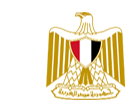Anba Samaan El-Kharraz “Simon the tanner” Monastery
Anba Samaan Monastery or Saint Simon the
tanner in the heart of Fatimid Cairo is a historic masterpiece manifesting the genius
of the Egyptian architect who built this remarkable piece of architecture to
become one of Masr Al-Qadims’s most exquisite landmarks. Samaan El-Kharraz or Simon the Tanner is one of the saints of the Coptic Orthodox Church and he was a good and righteous man who worked at leather tanning and repairing shoes.
In the reign of Al-Mu’izz li-Din Allah, the
fourth ruler of the Fatimid caliphate in Egypt, he had a minister named Yaqub
ibn Killis, who was Jewish. He informed Al-Mu’izz that the Christian Gospel
says, “if you have faith as small as a mustard seed, you can say to this
mountain, ‘Move from here to there,’ and it will move. Nothing will be
impossible for you.”
Al-Mu’izz ordered Coptic Pope Abraham of
Alexandria, who is now venerated as a saint by the Coptic Orthodox Church, to
move Mokattam Mountain. The saint asked Al-Mu’izz to give him some time.
Abraham continuously fasted for three days until he fainted and saw the Virgin
Mary in a dream, who told him about a man would help him move the mountain.
He helped to move the mountain from Ramses
area. After the transfer of Mokattam, Saint Samaan disappeared into one of the
caves of the mountain. Later, a monastery was built in the same place.
The most distinctive feature of Saint Simon
Monastery is that it is carved into the rocks of Al-Mokattam Mountain. At first
glance, it seems as it is part of the mountain. It is located in Al-Mokattam
area. The idea of building Saint Simon Monastery came up after the discovery of
the cave where Saint Simon was buried in February 1974 during an expedition of
Coptic archaeologists to find Saint Simon’s possessions. They were able to find
a tomb with a skeleton inside, which is believed to be Saint Simon the tanner
corpse. The discovered tomb also had a drawing of the patriarch
and a bald man filling two jars of water. So, the scientists assumed that this
bald man is Saint Simon because he used to distribute water to poor people
houses.
So, when the monastery was built, it housed
all the discovered relics of Saint Simon along with beautiful paintings carved
into the rocks. It was built gradually with the help of Zabbaleen district’s
residents in Al-Mokattam area, who transferred more than two million and a half
stones to construct the monastery. It was built on an area of approximately
1000 m2 in the heart of Al-Mokattam mountain.
Moreover, it consists of four churches,
which are Cathedral of Virgin Mary and St. Samaan El-Kharraz, Anba Abraam
Church, St.
Marcos Church, St. Samaan El-Kharraz’s hall with a capacity of 2000 people, and Anba Paula Church. Many tourists go to visit the monastery and see the
mountain that moved miraculously.
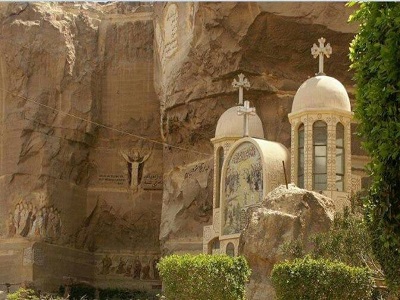
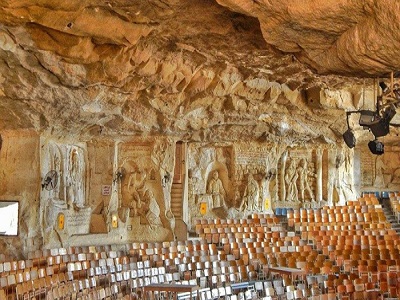
Virgin Mary and St. Samaan
El-Kharraz Cathedral
It was named in honor of the Virgin Mary and
St. Samaan to commemorate the memory of the miracle of Al-Mokattam Mountain
moving.
The Cathedral
was built in two phases. The first phase was a small cave with a one-meter
ceiling frequented by church servants for the prayer meetings. Then an altar
was added. While in the second phase, fixed step-like seats were constructed in
November 1994 to accommodate a large number of people. It is the largest church
in the monastery.
Anba Abraam Church
It was given
this name in honor of the patriarch, who the miracle happened during his reign.
He was the one who introduced the three-day fast, which the church fasted
before the miracle, and it also preceded the Nativity Fast. So, it became 43
days rather than 40 days of fasting.
The Church of
St. Marcos and St. Samaan El-Kharraz Hall
This place was discovered
in 1974, and it was filled with huge stones to the cave’s ceiling, which now
houses St. Mark Church and St. Samaan El-Kharraz ‘s hall. It had only one
extremely steep entrance, which is currently the big glass window overlooking
the area. In 1991, the stones were removed from the cave to start the
construction of the church and the hall.
The church of
St. Marcos was established in 1992 and the dome of the church was decorated
with three marvelous paintings made of mosaic pieces. The paintings depict important events from the Bible, such as the Crucifixion, the resurrection, and the Ascension.
As for St.
Samaan Hall, it has several exquisite paintings showing spiritual events from
the Bible, the most distinctive of which is a painting of Jesus Christ opening
his arms, waiting for all who come to him.
The Church of
Anba Paula Awal Al-Sawah
It was named after Anba Paula Awal Al-Sawah, who had an
ascetic life and isolated himself at a cave in Al-Mokattam Mountain to worship
God for 70 years. This cave was discovered in 1986 during some construction
works in the area. The first holy Mass prayer held in the church was in 1991.
Anba Samaan Monastery on Google Maps
Saint Mark's
Coptic Orthodox Cathedral
Alexandria
city is the edifice of civilization and cradle of history, which houses the
oldest church St. Mark Church. When St. Mark the evangelist came to Alexandria
in 62 A.D and founded the Church of Alexandria known as St. Mark Coptic Church.
St. Mark Church became the headquarter of the patriarch of the church for one
thousand years. Then the 66th Pope of Alexandria and Patriarch of the
See of St. Mark first moved the seat of the pope from Alexandria to the Hanging
Church in Al-Fustat area then after several times in Al-Abbasia area.
On July
24, 1965, during the celebration of the 13th anniversary of the 1952
Revolution, Pope Cyril VI laid the foundation of the largest cathedral in the
Middle East in the name of St. Mark the evangelist, in the presence of
President Gamal Abdel Naser, who Abdel
Naser donated 100 thousand pounds as a contribution to the cathedral
construction.
The Cathedral
was built next to St. Peter Church on Anba Reweiss land in Al-Abbasia area.
It took three years to complete its construction. Then in 1965, when the
remains St. Mark the evangelist returned to Egypt after 1900 years of his
martyrdom, the Cathedral was inaugurated in a global ceremony
attended by President Gamal Abdel Naser, Emperor of Ethiopia Haile Selassie, some
patriarchs of Christian churches in the East, and representatives of Christian
communities from all over the world.
During the Inauguration,
the Cathedral received gifts, including an altar covered with pure gold from
the Russian Orthodox Church and a bible a golden cross from the Ethiopian
Emperor.
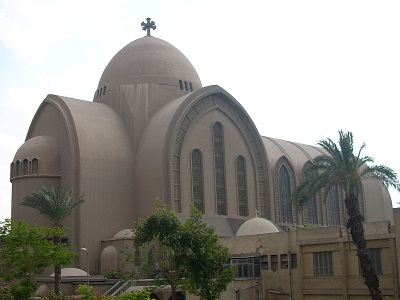
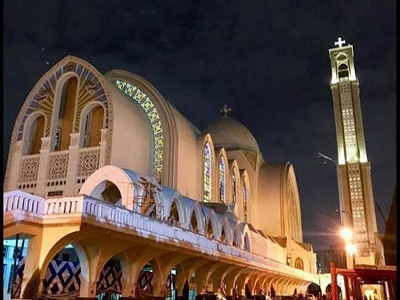
St. Mark Cathedral Design
The
external design of the Cathedral is shaped like a cross, and it consists of two
intersected basements with a dome in the middle. It also has two minarets. From
the inside, it is shaped like a basilica and divided into three parts consist
of three sanctuaries behind them the Cathedral’s three altars. The main altar was
named after St. Mark the evangelist and the founder of the Coptic Church in
Egypt. The other two alter were named after Virgin Mary, St. Athanasius the
Apostolic and the 20th Coptic Patriarch, and Pope Kirolos VI; the
116th Patriarch and the founder of the Cathedral.
St.
Mark Cathedral houses more than one church, two of which hold the name of
Virgin Mary; the first is Virgin Mary and Anba Reweiss Church, and the second is
Virgin Mary and Anba Bishoy Church. These two churches were constructed on August
22, 1976 below the Cathedral as well as Anba Antonius Church, St. Morris
Church, and two other churches.
Saint Mark's Coptic Orthodox
Cathedral on Google Maps
Last Update: 2024


